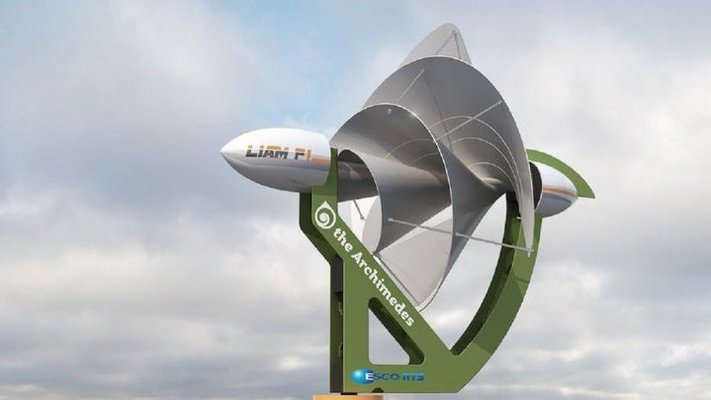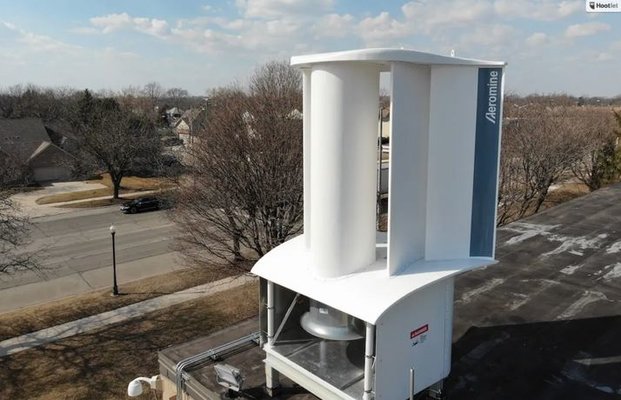Gareth J
Member
- Messages
- 3,861
- Location
- North Cornwall
Can confirm that the brake will fire if 9v batteries are getting tired. As you mention, I suspect it's a failsafe. A cheap test will be to probe the board to check there is strong (18+??) voltage where it should be. Or, as it's currently vertical, the output of the battery box.
I may possibly need to lower ours again this year to alter something so let us know if you want any pictures/measurements and I'll factor that in. Though it's currently running nicely at full chat 5kW so hopefully not.
Regarding tweaking potentiometers, this ought to be done on the bench, or at least with the turbine lowered, as it's impossible to do running. So work out what voltage should be seen at the inputs and replicate that on the bench. Ideally via something variable, so you can dial in the cut out voltage.
As your three phase wiring will be going all the way into the rectifier before your inverters, you can simply measure the voltage between phases there to get an idea of where the cut out should be.
Say it's 150VAC, an AC generator + variac around that voltage will help a lot. Maybe. Again, pushing the limit of my electrics knowledge but should be doable.
But yes, change te 9Vs as a matter of course. If they've been at all busy firing relays, they tire pretty quickly.
If the tape is the same as the 3M stuff I've seen sold online at £25/m it would definitely need to be cut down as it's 100mm wide! And not unreasonable at that price really, if it did the job. A 3cm strip of 30cm X3 would be ample and it would need to taper to just a couple cm at the thin end, to give any chance of success going around the tip it seems.
If you can find out if it cuts ok with scissors or a Stanley blade, that would be interesting. Does it have a backing sheet, like aluminium foil tape does? What about removal? It wouldn't be a great expense to get a roll in for next year to try. Anything to minimise downtime as when it's down, it's very vulnerable to rain pooling and running into the main bearing.
I may possibly need to lower ours again this year to alter something so let us know if you want any pictures/measurements and I'll factor that in. Though it's currently running nicely at full chat 5kW so hopefully not.
Regarding tweaking potentiometers, this ought to be done on the bench, or at least with the turbine lowered, as it's impossible to do running. So work out what voltage should be seen at the inputs and replicate that on the bench. Ideally via something variable, so you can dial in the cut out voltage.
As your three phase wiring will be going all the way into the rectifier before your inverters, you can simply measure the voltage between phases there to get an idea of where the cut out should be.
Say it's 150VAC, an AC generator + variac around that voltage will help a lot. Maybe. Again, pushing the limit of my electrics knowledge but should be doable.
But yes, change te 9Vs as a matter of course. If they've been at all busy firing relays, they tire pretty quickly.
Yeah, makes sense. Given the length of heli blades, the tips must be moving some. I'd estimate the turbine spins at roughly 3Hz, so at 2.5m radius, that would make the tips going at maybe approaching 50m/s which is a fair lick too and explains the wear.The tape will not go round compound curves.
Never tried cutting as all our use is strait runs and wrap round leading edge
The 500 blades are running at high fps
If the tape is the same as the 3M stuff I've seen sold online at £25/m it would definitely need to be cut down as it's 100mm wide! And not unreasonable at that price really, if it did the job. A 3cm strip of 30cm X3 would be ample and it would need to taper to just a couple cm at the thin end, to give any chance of success going around the tip it seems.
If you can find out if it cuts ok with scissors or a Stanley blade, that would be interesting. Does it have a backing sheet, like aluminium foil tape does? What about removal? It wouldn't be a great expense to get a roll in for next year to try. Anything to minimise downtime as when it's down, it's very vulnerable to rain pooling and running into the main bearing.




 they stopped selling them as the quoted saving a 3d on your leccy bill
they stopped selling them as the quoted saving a 3d on your leccy bill  need a bit one to do that
need a bit one to do that
